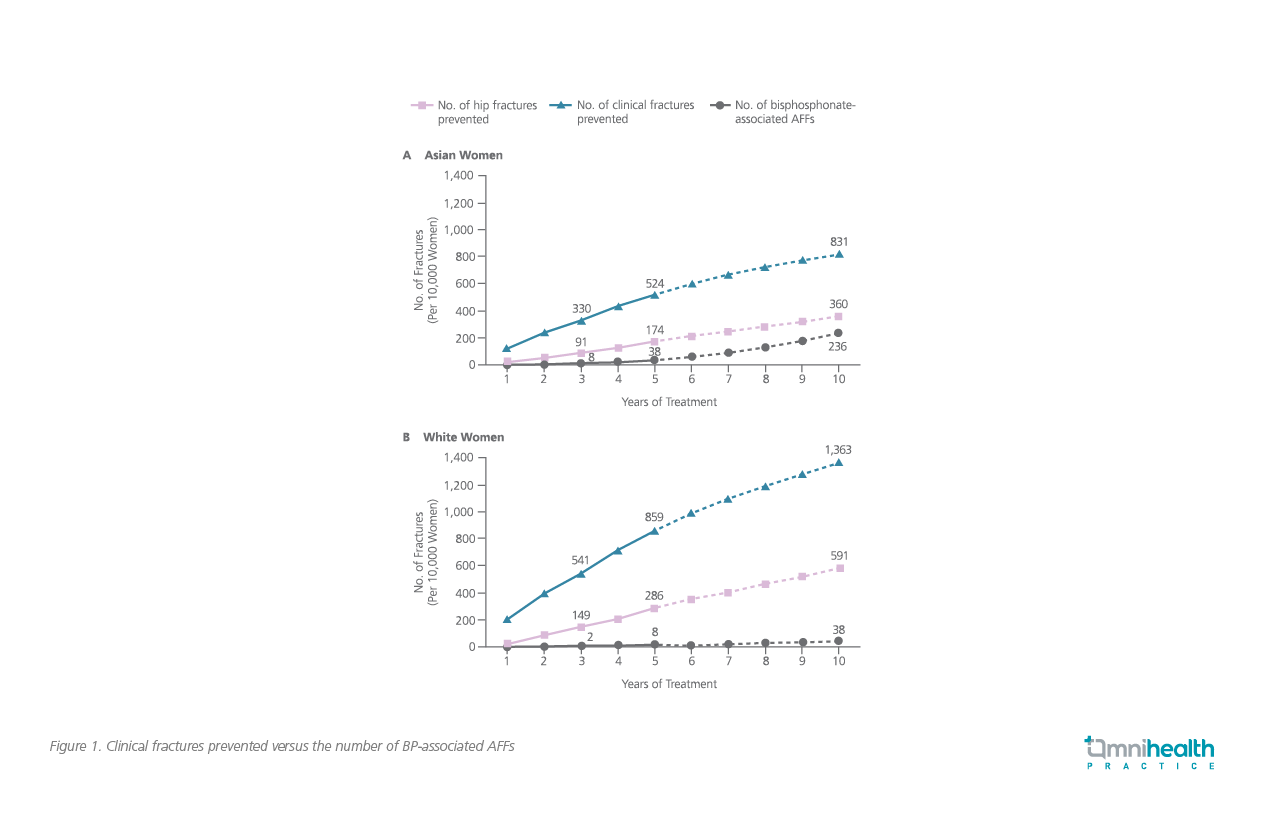CONFERENCE UPDATE: ENDO 2021
Benefits of osteoporotic fracture prevention outweigh risks among postmenopausal women
Bisphosphonates (BP) and denosumab are commonly used to reduce the risk of fractures in postmenopausal women.1,2 Where BP inhibits osteoclast-mediated resorption and remodeling of the bone, denosumab blocks the binding of the receptor activator for nuclear factor kappa B (RANK) ligand and inhibits osteoclast formation, function and survival that decreases bone turnover.1,2 Indeed, an early study found that BP can reduce the risk for nonvertebral fracture, vertebral fracture and hip fracture by 25%, 70% and 41%, respectively, while denosumab can reduce these risks by 20%, 68% and 40%, respectively.1
However, in 2006, atypical femur fractures (AFFs) were recognized as potential side effects of BP and denosumab treatment.2,3 Characterized by the presence of a transverse line through the lateral cortex and focal cortical thickness of lateral cortex at the fracture line, AFF led to an increasing public concern that resulted in more than 50% reduction in BP usage.3,4 To elucidate the epidemiology of osteoporotic fracture and determine the benefit-risk of prescribing BP among postmenopausal women, Professor Dennis Black from the Department of Epidemiology and Biostatistics of the University of California, San Francisco, United States, shared his recent findings from the Kaiser Permanente Southern California (KPSC) osteoporosis cohort.4
In the KPSC prospective cohort study, 1.2 million women older than 50-years-old were recruited and followed for 10 years.4 The primary outcome was AFF confirmed by X-rays from subtrochanteric/ shaft femur fractures.4 Over the study period, 306 incidences of AFFs were observed with 271 (89%) cases being in women receiving BP.4 Notably, the incidence of AFF increased from 0.07 to 13.10 per 10,000 person-years in women who received BP for more than 8 years when compared to those who have received BP for less than 3 months.4 Prof. Black highlighted that “AFF risks are extremely low compared with benefits [of bisphosphonate treatment].”
When considering the benefit of fracture prevention treatment, the use of BP was associated with the prevention of 149 hip fractures for every 2 BP-associated AFFs in Caucasians and 91 hip fractures for every 8 BP-associated AFFs in Asian women (Figure 1).4 In addition, the discontinuation of BP resulted in a rapid decline in AFF risk.4 Based on these findings, Prof. Black emphasized that the benefit of BP is far greater than the risk that it may incur, and recommended a short drug holiday following every five-year use of BP for the optimal prevention of osteoporotic fracture among postmenopausal women.4

Guideline update: Pharmacological management of osteoporosis in postmenopausal women
Treatment guidelines for the management of osteoporosis in postmenopausal women were updated by the Endocrine Society. The updated guidelines recommended to include or alter treatments with romosozumab, selective estrogen receptor modulators, menopausal hormone therapy, tibolone, calcitonin, calcium, and vitamin D.

